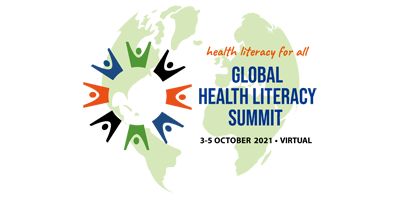Abstract Preview
Abstract
|
Title What instructions are available to health researchers for writing lay summaries? |
|
Type Oral Presentation Only |
|
Theme Global Health Literacy Summit 2021 |
|
Topic Research and new measures for health literacy |
Authors
|
Main Author Karen Gainey1 |
|
Presenting Author Karen Gainey1 |
|
Co-Author Steven Kamper2 Mary O'Keeffe4 Adrian Traeger4 Danielle Muscat1 Christopher Williams3 Kirsten McCaffrey1 |
Authors' Institution
|
Department / Institution / Country Sydney Health Literacy Lab, School of Public Health / The University of Sydney / Australia1 Faculty of Medicine & Health / University of Sydney & Nepean Blue Mountains Local Health District / Australia2 School of Medicine and Public Health / The University of Newcastle / Australia3 Institute for Musculoskeletal Health, Sydney Local Health District / The University of Sydney / Australia4 |
|
Abstract Content (abstracts should be written in Size 11 font, Arial font style) The study objective was to better understand the characteristics of, and requirements for, lay summaries by reviewing multiple data sources. Using a scoping review methodology, we searched the websites of each identified data source to determine if they require, suggest, or refer to lay summaries. The data sources were journals, global health organisations, professional medical organisations and multi-disciplinary associations, consumer advocacy groups and funding bodies from Australia, USA, UK, Canada, and New Zealand. These data sources were linked to the top 10 non-communicable diseases. Using an inductive approach, we identified characteristics of lay summaries and lay summary writing instructions and extracted data on these characteristics. These characteristics are lay summary formats, audience, requirements, authorship and labels, and elements of lay summary writing instructions (e.g., word count/length). The websites of 526 data sources were searched. Of these, 124 published or mentioned lay summaries and 108 provided writing instructions. For lay summaries, most were in journals, written by the author of the published paper and non-mandatory. Thirty-three distinct labels for a lay summary were identified, the most common being “graphical abstract”, “highlights” and “key points”. From the lay summary writing instructions, the most common elements for written lay summaries referred to: structure (86%), content (80%) and word count/length (74%). The least common elements were readability (3%), use of jargon, acronyms, and abbreviations (24%), and wording (29%). We located few instructions related to readability, use of jargon, acronyms and abbreviations, and wording. Some instructions provided structured formats via subheadings or questions to guide content, but not all. Only half mandated the use of lay summaries. For lay summaries to be effective, writing instructions should consider the intended audience, ideally incorporating consumer input into their development. Presently, lay summaries are likely to be inaccessible to many consumers, written at a high reading level, with jargon, acronyms, and abbreviations. Ideally, all research articles will have an accompanying lay summary. Mandatory lay summaries, however, are of limited value without clear and thorough instructions to guide authors.
|
Requires Audio or Video system for Presentation?: No
